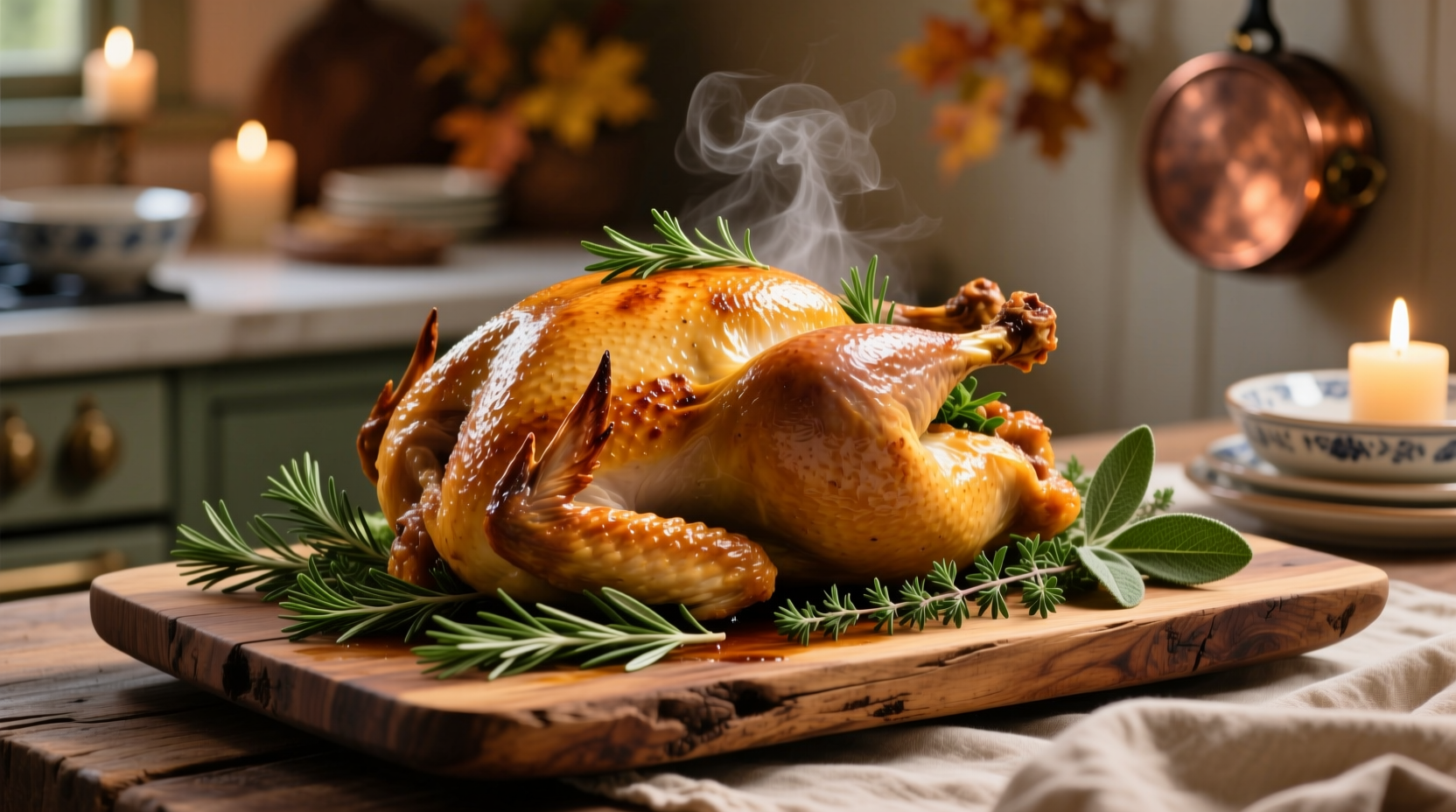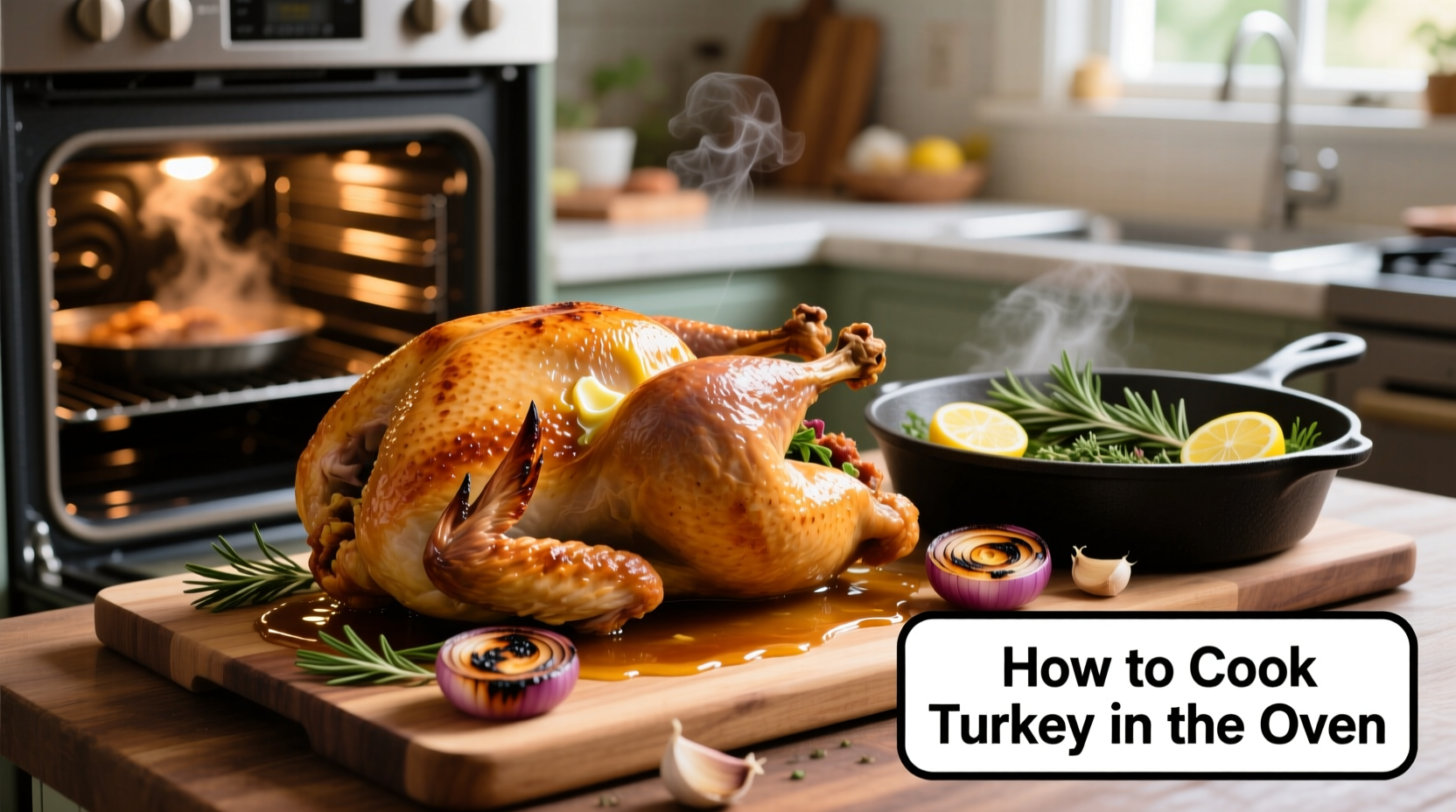Nothing says celebration like a perfectly roasted turkey, but getting that golden-brown, moist interior without food safety risks requires precise technique. This guide delivers USDA-backed timing charts, professional chef tricks for maximum juiciness, and critical temperature checkpoints you won't find in most recipes. Avoid dry meat and salmonella risks with our step-by-step oven method perfected through decades of culinary testing.

Your Turkey Success Roadmap
Follow this sequence for stress-free roasting. Each phase builds on the last—skip steps and you'll compromise texture or safety.
Phase 1: Pre-Roast Prep (24 Hours Before)
Dry brining overnight is the chef's secret for juicy meat. Pat turkey completely dry with paper towels—moisture is the enemy of crisp skin. Rub 1 tablespoon kosher salt per 5 pounds under the skin and inside the cavity. Refrigerate uncovered on a rack over a tray. This draws out moisture initially, then reabsorbs seasoned liquid for deeper flavor penetration. USDA food safety guidelines confirm this method reduces surface bacteria while enhancing texture.
Phase 2: Oven Setup & Timing
Preheat to 325°F (163°C)—never higher. Higher temperatures create a false crust that traps rawness inside. Place turkey breast-side up on a rack in a roasting pan. Add 2 cups broth to the pan bottom to prevent smoking and create steam. Never stuff the bird—USDA data shows stuffed turkeys take 25% longer to reach safe temperatures, increasing bacterial growth risk.
| Unstuffed Turkey Weight | Approximate Roasting Time | USDA Verified Temp Checkpoints |
|---|---|---|
| 8-12 lbs (3.6-5.4 kg) | 2½-3 hours | Check at 1¾ hours |
| 12-16 lbs (5.4-7.3 kg) | 3-3½ hours | Check at 2¼ hours |
| 16-20 lbs (7.3-9.1 kg) | 3½-4 hours | Check at 2¾ hours |
| 20-24 lbs (9.1-10.9 kg) | 4-4½ hours | Check at 3¼ hours |
Phase 3: Temperature Monitoring (Non-Negotiable!)
Insert an instant-read thermometer into three critical zones:
- Chest muscle: 165°F (74°C) minimum
- Inner thigh: 165°F (74°C) minimum
- Wing joint: 160°F (71°C) minimum
USDA Food Safety and Inspection Service emphasizes that visual cues like juice color are unreliable. Undercooked turkey causes 1.3 million salmonella cases annually per CDC data. If using a pop-up thermometer, verify with a digital probe—they often trigger at 180°F, guaranteeing dry meat.
Phase 4: The Critical Rest Period
Transfer turkey to a cutting board, tent loosely with foil, and rest 20 minutes minimum. This allows juices to redistribute—skipping this step loses up to 40% of moisture during carving. Professional kitchens use this time to make gravy from pan drippings. Never carve immediately; the meat fibers need to reabsorb liquids.
Phase 5: Carving Like a Pro
Start with legs: Cut through the skin between thigh and body, then twist leg to pop the joint. Slice parallel to the breastbone for even portions. Save the carcass for stock—simmer 4 hours with vegetables for rich gravy base. This technique prevents shredding the delicate breast meat.
When Standard Methods Fail: Context Boundaries
These rules have critical limitations:
- Convection ovens: Reduce temperature by 25°F and check 30 minutes early—forced air speeds cooking
- Butterflied (spatchcocked) turkeys: Cook 30-45 minutes faster at 425°F—ideal for crispy skin but requires precise timing
- Older ovens: Use an independent oven thermometer—built-in dials are often inaccurate by 25°F+
Food safety trumps all aesthetics. If your turkey hasn't reached 165°F by estimated time, continue roasting—no exceptions. Covering with foil after 2 hours prevents over-browning but doesn't speed cooking.











 浙公网安备
33010002000092号
浙公网安备
33010002000092号 浙B2-20120091-4
浙B2-20120091-4